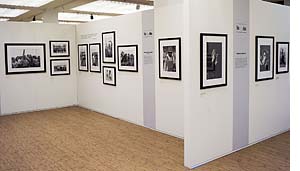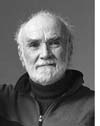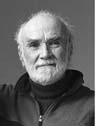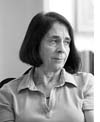This Light of Ours: Activist Photographers of the Civil Rights Movement
The Center for Documentary Expression and Art is pleased to present This Light of Ours: Activist Photographers of the Civil Rights Movement, a major, new, traveling exhibition that depicts the Southern Freedom Movement through the visions and voices of eight men and one woman who lived and worked in the South between 1963-1967.
The Exhibition

This woman stands ready at the county courthouse on a Greenwood, Mississippi “Freedom Day.” Scores lined up to register to vote. Police arrested them and hauled them to jail on a city bus. Bob Fletcher, Greenwood, Mississippi, 1964
Unlike images produced by photojournalists, who covered breaking news events, these nine photographers lived within the movement—primarily within the Student Nonviolent Coordinating Committee (SNCC) framework—and documented its activities by focusing on the local people and student activists who together made it happen. Exhibit photographs, combined with didactic text, convey SNCC’s distinctive yet little known “bottom-up” community organizing strategy as well as its organizational development. As sociologist Charles Payne explains, understanding this strategy offers a “different sense” of the southern freedom struggle by providing “a greater emphasis on the long-term development of leadership in ordinary men and women.”

Photo by Matt Herron, Selma-Montgomery March, Alabama, 1965
The core of the exhibition is a selection of 157 black-and white photographs, representing the combined
work of photographers
Bob Adelman, George Ballis, Bob
Fitch, Bob Fletcher, Matt Herron, David Prince, Herbert Randall, Maria Varela, and Tamio Wakayama. The images are grouped around four
major themes and convey SNCC’s organizational strategies and development, resolve in the face of violence, impact on the nation’s politics, and influence of the nation’s consciousness. In addition, photographer’s eye-witness accounts of life inside SNCC—their descriptions of how and why photographs were taken and what impact images had—are incorporated into audio guides prepared for adults and children. The audio guides are presented, in large part, through the voices of the photographers and personalize the movement, allowing visitors to understand how activists were affected by participation in a movement that transformed American life.
A thirty-minute exhibit film, Utah’s Freedom Riders, directed by KUED-TV filmmaker Nancy Green, concludes the exhibit. The film explores and chronicles the experiences of men and women from Utah who participated in the Civil Rights Movement. A central aim of This Light of Ours is to expand public understanding of the Civil Rights Movement by presenting the actions and

The exhibit.
achievements of young organizers and “ordinary” people who emerged from the grassroots of local communities and fashioned a movement that changed the South and America. As Dr. Payne eloquently observes: “Ordinary people who learn to believe in themselves are capable of extraordinary acts, or better, of acts that seem extraordinary to us precisely because we have such an impoverished sense of the capabilities of ordinary people.”

Julian Bond providing tours for exhibit visitors.
Symposium: Legacies of the Civil Rights Movement

John McCormick, Salt Lake Community College Dean, School of Humanities and Social Sciences, and Charlie Cobb, Jr., civil rights activist and author, discuss “Education and the Movement” at one of SLCC’s symposium events.
Legacies of the Civil Rights Movement was a month-long symposium that was co-sponsored by the Center for Documentary Expression and Art, Utah Valley University, Salt Lake Community College, Westminster College, the University of Utah, KUED-TV, and the Salt Lake City Downtown Public Library. The symposium set the stage for the debut of This Light of Ours: Activist Photographers of the Civil Rights Movement, which opened at The Leonardo in Salt Lake City on October 8, 2011.
Legacies of the Civil Rights Movement aimed to deepen public engagement with the CDEA exhibition and the Civil Rights Movement as a whole. Specifically, the symposium sought to provide an open public forum to examine the role of the Student Nonviolent Coordinating Committee (SNCC) and the impact of “ordinary” people on the southern freedom struggle (also called the Civil Rights Movement). Additionally, since SNCC has been overlooked by popular media accounts of the movement, the symposium provided an opportunity for students, educators, and the general public to expand their knowledge of the movement through the contributions of scholars such as Clayborne Carson, Emilye Crosby, John Dittmer, Vincent Harding, Wesley Hogan, Hassan, Jefferies, and Charles Payne, as well as SNCC veterans Charles E. Cobb Jr. and Judy Richardson, and activist photographers Matt Herron and Maria Varela.

Clayborne Carson, Director of Stanford University’s Martin Luther King, Jr. Research and Education Institute; with John Else, documentary filmmaker and Professor of Journalism at the University of California, Berkeley; and Judy Richardson, civil rights activist and documentary filmmaker, at the University of Utah’s panel on “Teaching the Movement.”

Maria Varela, activist photographer, addresses Westminster College students on the subject of “Photography and the Movement.”
The symposium featured four interrelated layers of activities on four campuses. Events began on Monday and Tuesday, September 12 and 13, at Utah Valley University and continued on Mondays and Tuesdays over the next three weeks at the Salt Lake Community College; Westminster College; and the University of Utah. The symposium offered keynote presentations, panel discussions, film screenings, and informal gatherings and discussions with movement scholars, SNCC veterans, and activist photographers who focused on such topics as:
- The implications of the New Movement Scholarship, which examines the little known contributions of local leaders and “ordinary” people in the southern freedom struggle;
- The impact of student activists who began the 1960 sit-ins, formed (in the same year) the Student Nonviolent Coordinating Committee (SNCC), and subsequently developed the direct action techniques and grass-roots organizing style that formed the “cutting edge” of southern movement activity;
- The leadership role of women within a full-time grassroots organizing movement;
- The impact of photography, media, and the arts in carrying the movement’s message to the nation;
- The organizing strategies of SNCC and their impact on education, government, civic engagement, and their relevance for today; and
- The challenges and possibilities inherent in teaching the movement in
our schools and the importance of passing on the movement’s legacies to the next generation of American youth.
Project Team

Matt Herron
 Matt Herron is the exhibition’s curator and one of its contributing photographers. In 1964, Matt, Jeannine (his wife), and their two children became one of the few families to move south and join the Civil Rights Movement. In 1964 Herron organized the Southern Documentary Project, which consisted of seven photographers who sought to document social change during that tumultuous time period. Currently, he manages Take Stock, a photography library specializing in civil rights and farm worker photography.
Matt Herron is the exhibition’s curator and one of its contributing photographers. In 1964, Matt, Jeannine (his wife), and their two children became one of the few families to move south and join the Civil Rights Movement. In 1964 Herron organized the Southern Documentary Project, which consisted of seven photographers who sought to document social change during that tumultuous time period. Currently, he manages Take Stock, a photography library specializing in civil rights and farm worker photography.

Charles E. Cobb Jr.
Charles E. Cobb Jr., SNCC veteran and award-winning journalist and author, is the exhibit’s historical consultant. He prepared the exhibit’s didactic text and photo captions. His books include:On the Road to Freedom: A Guided Tour of the Civil Rights Trail; No Easy Victories: African Liberation and American Activists over a Half-Century, 1950-2000; and Radical Equations: Civil Rights from Mississippi to the Algebra Project. He has been a staff writer for National Geographic magazine, a foreign affairs reporter for NPR (National Public Radio), and a writer/ correspondent for the PBS program FRONTLINE.

Maria Varela
Maria Varela is an exhibit consultant and a contributing photographer. She was a SNCC staff member from 1963-1967. In 1990, Varela was awarded a MacArthur Foundation Fellowship for collaboration with Mexican American and Native American artisans and livestock growers in the Southwest who preserved pastoral cultures through sustainable economic development strategies. In 1997-98, she became the Hulbert Southwestern Studies Endowed Chair at Colorado College, where she is a visiting professor.

Left-to-right: Kent Miles, CDEA exhibits coordinator (with hat); Leslie Kelen, CDEA executive director; and Norm Judd, exhibit designer, discuss exhibit presentation possibilities.

Judy Richardson
Judy Richardson, media resource consultant, is a writer, teacher, lecturer, and award-winning filmmaker whose projects include: Eyes on the Prize (Co-Producer); Malcolm X: Make It Plain; and television documentaries on slave catchers, slave resistance, and African American historic sites. Richardson is available to consult with future venues to create Civil Rights Film festivals to complement the exhibition.

Antonia Bryan
Antonia Bryan, exhibit audio guide producer, has produced hundreds of temporary exhibition and permanent collection tours for adults and children at institutions all over the country. She has worked on subjects from Tutankhamun to Picasso. Among her clients are: the Metropolitan Museum of Art, New York’s Museum of Modern Art, the National Gallery of Art, Fine Arts Museums of San Francisco, Boston Museum of Fine Arts, and Cleveland Museum of Art.

Norm Judd
Norm Judd, exhibit designer, owns Dimensional Design and is design director for Insight Exhibits. He has 33 years of experience in museum and commercial trade show design and construction projects including the CDEA Salgado Exhibit in 2005, Clark Planetarium in 2003, LDS Church Visitor Center in 2001, and the SLC Olympic Legacy Pavilion in 2007.

Gil Schaefer
Gil Schaefer, exhibit graphic designer, is the founder and director of Schaefer Design, a graphic design company established in Salt Lake City, Utah, in 1996. Schaefer has more than twenty years of experience carrying out custom and environmental graphic design projects. He created the visual design of This Light of Ours, which included the layout of the didactic text and all exhibit brochures. Schaefer also was the graphic designer for CDEA’s 2005 Salgado exhibit.
Exhibit Photographers
 Bob Adelman initially photographed the efforts of the Congress of Racial Equality (CORE) to desegregate restaurants and bus terminals on Route 40, between New York and Washington, DC. He later went to Birmingham, where the Southern Christian Leadership Conference, headed by Dr. Martin Luther King, was carrying out “Project C,” and took some of his best movement images. Adelman’s movement photos caught the attention of magazine editors and brought him national and international assignments and, later, acclaim. In 2007, Life published Mine Eyes Have Seen, Adelman’s retrospective on the Civil Rights Movement in its Great Photographers Series.
Bob Adelman initially photographed the efforts of the Congress of Racial Equality (CORE) to desegregate restaurants and bus terminals on Route 40, between New York and Washington, DC. He later went to Birmingham, where the Southern Christian Leadership Conference, headed by Dr. Martin Luther King, was carrying out “Project C,” and took some of his best movement images. Adelman’s movement photos caught the attention of magazine editors and brought him national and international assignments and, later, acclaim. In 2007, Life published Mine Eyes Have Seen, Adelman’s retrospective on the Civil Rights Movement in its Great Photographers Series.
 George “Elfie” Ballis (1925-2010) began as a labor reporter in Chicago and came to migrant photography via work as an editor for a California union newspaper. After working in the Southern Documentary Project in 1964, he moved back to California and photographed Cesar Chavez and the emerging United Farm Worker movement. Over the next seven years, he amassed the largest body of still photographs on this subject, more than 30,000 images. He also shot and produced several documentary films including I Am Juaquin, a Chicano film-poem, and The Dispossessed, the struggle of Pit River Indians to regain tribal lands. In 1995, he produced Dream What We Can Become and Rejoice, a bi-lingual picture-poem.
George “Elfie” Ballis (1925-2010) began as a labor reporter in Chicago and came to migrant photography via work as an editor for a California union newspaper. After working in the Southern Documentary Project in 1964, he moved back to California and photographed Cesar Chavez and the emerging United Farm Worker movement. Over the next seven years, he amassed the largest body of still photographs on this subject, more than 30,000 images. He also shot and produced several documentary films including I Am Juaquin, a Chicano film-poem, and The Dispossessed, the struggle of Pit River Indians to regain tribal lands. In 1995, he produced Dream What We Can Become and Rejoice, a bi-lingual picture-poem.
 Bob Fitch is an ordained minister who ventured south in 1965 at age 24 to join Martin Luther King’s Southern Christian Leadership Conference (SCLC) as a staff photographer. His pictures appeared initially in the northern African-American press, which could not afford to send staff into the South. After photographing for SCLC, Fitch returned home to California and began to apply lessons learned in the South to the forces of social change rapidly coalescing along the West Coast. In the 1970s, he devoted himself to documenting the actions of the United Farm Workers in northern California. He is still active photographing social justice activities.
Bob Fitch is an ordained minister who ventured south in 1965 at age 24 to join Martin Luther King’s Southern Christian Leadership Conference (SCLC) as a staff photographer. His pictures appeared initially in the northern African-American press, which could not afford to send staff into the South. After photographing for SCLC, Fitch returned home to California and began to apply lessons learned in the South to the forces of social change rapidly coalescing along the West Coast. In the 1970s, he devoted himself to documenting the actions of the United Farm Workers in northern California. He is still active photographing social justice activities.
 Bob Fletcher was photographer and administrator for a tutorial program of the National Student Association in Detroit and later at the Harlem Education Project in New York. From 1964 to 1968, he was based in Mississippi as a photographer for SNCC and also taught in a Mississippi Freedom School. He has worked on two documentary films about African independence movements, A Luta Continua(“The Struggle Continues”) 1971, and O Povo Organizado (“The People Organized”) 1975. He currently practices law in New York and Florida.
Bob Fletcher was photographer and administrator for a tutorial program of the National Student Association in Detroit and later at the Harlem Education Project in New York. From 1964 to 1968, he was based in Mississippi as a photographer for SNCC and also taught in a Mississippi Freedom School. He has worked on two documentary films about African independence movements, A Luta Continua(“The Struggle Continues”) 1971, and O Povo Organizado (“The People Organized”) 1975. He currently practices law in New York and Florida.
 Matt Herron is the exhibition’s curator and one of its contributing photographers. In 1964, Matt, Jeannine (his wife), and their two children became one of the few families to move south and join the Civil Rights Movement. In 1964 Herron organized the Southern Documentary Project, which consisted of seven photographers who sought to document social change during that tumultuous time period. Currently, he manages Take Stock, a photography library specializing in civil rights and farm worker photography.
Matt Herron is the exhibition’s curator and one of its contributing photographers. In 1964, Matt, Jeannine (his wife), and their two children became one of the few families to move south and join the Civil Rights Movement. In 1964 Herron organized the Southern Documentary Project, which consisted of seven photographers who sought to document social change during that tumultuous time period. Currently, he manages Take Stock, a photography library specializing in civil rights and farm worker photography.
 Dave Prince was the only full-time college student employed as a photographer in the summer-long Southern Documentary Project. After the summer, he returned to Athens, Ohio, and graduated from Ohio University. He later gave up photography and became a documentary filmmaker. “I made several strong films for PBS,” he explained, “and then got enticed back to Ohio University, where I was hired as one of their professors and taught film for 30 years.”
Dave Prince was the only full-time college student employed as a photographer in the summer-long Southern Documentary Project. After the summer, he returned to Athens, Ohio, and graduated from Ohio University. He later gave up photography and became a documentary filmmaker. “I made several strong films for PBS,” he explained, “and then got enticed back to Ohio University, where I was hired as one of their professors and taught film for 30 years.”
 Herbert Randall is of Shinnecock and African-American ancestry. He was a freelance photographer until 1964 when he went south during Freedom Summer to document SNCC activities in Hattiesburg, Mississippi, in fulfillment of a Whitney Fellowship. He was awarded the Creative Artist’s Public Service Grant for Photography for 1971-72, and he later served as a photographic consultant to the National Media Center Foundation. He is currently active in the Kamoinge Workshop, a forum for African-American photographers based in New York City, which he helped found.
Herbert Randall is of Shinnecock and African-American ancestry. He was a freelance photographer until 1964 when he went south during Freedom Summer to document SNCC activities in Hattiesburg, Mississippi, in fulfillment of a Whitney Fellowship. He was awarded the Creative Artist’s Public Service Grant for Photography for 1971-72, and he later served as a photographic consultant to the National Media Center Foundation. He is currently active in the Kamoinge Workshop, a forum for African-American photographers based in New York City, which he helped found.
 Maria Varela is an exhibit consultant and a contributing photographer. She was a SNCC staff member from 1963-1967. In 1990, Varela was awarded a MacArthur Foundation Fellowship for collaboration with Mexican American and Native American artisans and livestock growers in the Southwest who preserved pastoral cultures through sustainable economic development strategies. In 1997-98, she became the Hulbert Southwestern Studies Endowed Chair at Colorado College, where she is a visiting professor.
Maria Varela is an exhibit consultant and a contributing photographer. She was a SNCC staff member from 1963-1967. In 1990, Varela was awarded a MacArthur Foundation Fellowship for collaboration with Mexican American and Native American artisans and livestock growers in the Southwest who preserved pastoral cultures through sustainable economic development strategies. In 1997-98, she became the Hulbert Southwestern Studies Endowed Chair at Colorado College, where she is a visiting professor.
 Tamio Wakayama spent his early childhood in the Tashme internment camp in British Columbia. He studied journalism and philosophy at the University of Western Ontario. In 1963, he became a SNCC staff member and, later, a SNCC photographer. Upon his return to Toronto in 1966, he assembledDream of Riches: The Japanese Canadians 1877-1977, an exhibit presenting the photographic reconstruction of the memory of the Nikkei community, which toured Canada and Japan. He is the author of six books, including A Dream of Riches and Inalienable Rice.
Tamio Wakayama spent his early childhood in the Tashme internment camp in British Columbia. He studied journalism and philosophy at the University of Western Ontario. In 1963, he became a SNCC staff member and, later, a SNCC photographer. Upon his return to Toronto in 1966, he assembledDream of Riches: The Japanese Canadians 1877-1977, an exhibit presenting the photographic reconstruction of the memory of the Nikkei community, which toured Canada and Japan. He is the author of six books, including A Dream of Riches and Inalienable Rice.
Consulting Scholars
Clayborne Carson is currently director of the Martin Luther King, Jr. Research and Education Institute at Stanford University and Martin Luther King, Jr. Distinguished Professor at Morehouse College in Atlanta. He has been a visiting professor or fellow at American University; the University of California, Berkeley; Emory University; and Harvard University. He has authored several seminal works on the Civil Rights Movement relating to Dr. King and to SNCC, particularly In Struggle: SNCC and the Black Awakening of the 1960s published in 1981.
Emilye Crosby is a professor in the Department of History at State University of New York at Geneseo. She is the author of A Little Taste of Freedom: The Black Freedom Struggle in Claiborne County, Mississippi (2005) for which she was awarded Honorable Mention for the Liberty Legacy Foundation Award of the Organization of American Historians. She also is the editor of the recently released book, Civil Rights History From the Ground Up: Local Struggles, a National Movement.
John Dittmer is Professor Emeritus of History at DePauw University, Greencastle, Indiana. His work presents one of the strongest voices on the theme of ordinary people in the movement. He is the author of Black Georgia in the Progressive Era, 1900-1920. His book Local People: The Struggle for Civil Rights in Mississippi won several awards including the Bancroft Prize in American History and the 1995 Outstanding Book on the subject of human rights in North America given by the Gustavus Myers Center.
Wesley Hogan is Associate Professor of History at Virginia State University, where she was co-director of the Institute for the Study of Race Relations, 2006-2009. She is author of Many Minds, One Heart: SNCC’s Dream for a New America (2007) and has written a chapter for the book Civil Rights History From the Ground Up: Local Struggles, a National Movement edited by Emilye Crosby (mentioned above.)
Hasan K. Jeffries, Associate Professor in the Department of History at Ohio State University, is author of the newly released Bloody Lowndes: Civil Rights and Black Power in Alabama’s Black Belt. The book tells the story of the local people and SNCC organizers who ushered in the Black Power era by transforming rural Lowndes County, Alabama from a citadel of White supremacy into the center of southern Black militancy.
Charles M. Payne is the Frank P. Hixon Professor in the School of Social Service Administration at the University of Chicago. He is the author of I’ve Got the Light of Freedom: The Organizing Tradition in the Mississippi Civil Rights Movement (1995) that has won awards from the Southern Regional Council, Choice Magazine, the Simon Wiesenthal Center, and the Gustavus Myers Center for the Study of Human Rights in North America. He also is co-author ofDebating the Civil Rights Movement (1999).
Visitor Responses
The interviews that follow were recorded on March 14, 2012 at the Asian Association of Utah. The three high school students who were interviewed are refugees from Sudan who were participating in the Association’s leadership training program. The three had just visited the exhibit “This Light Of Ours: Activist Photographers Of The Civil Rights Movement” as a part of their leadership training.
Comments Book Highlights
 The deeply moving visitor comments that follow were taken from the October 2011-June 2012 debut of “This Light of Ours: Activist Photographers Of The Civil Rights Movement” at The Leonardo, in Salt Lake City.
The deeply moving visitor comments that follow were taken from the October 2011-June 2012 debut of “This Light of Ours: Activist Photographers Of The Civil Rights Movement” at The Leonardo, in Salt Lake City.
Reviews and Articles
This Light of Ours: Activist Photographers in the Civil Rights Movement
Memphis Brooks Museum of Art’s ‘This Light of Ours’ gives insider perspective on civil rights
Book review: Photographs illuminate the not-so-distant past
Utah photo exhibit celebrates ‘ordinary’ fighters against segregation, By Brian Maffly, The Salt Lake Tribune, First Published Oct 02 2011 06:52 pm Last Updated Jan 20 2012 07:46 pm. Click here for article.
Museum opens with civil rights exhibit. The Deseret News — The Leonardo will feature science, technology, art. Published: Thursday, Oct. 6 2011 5:37 p.m. MDT. Click here for article.







